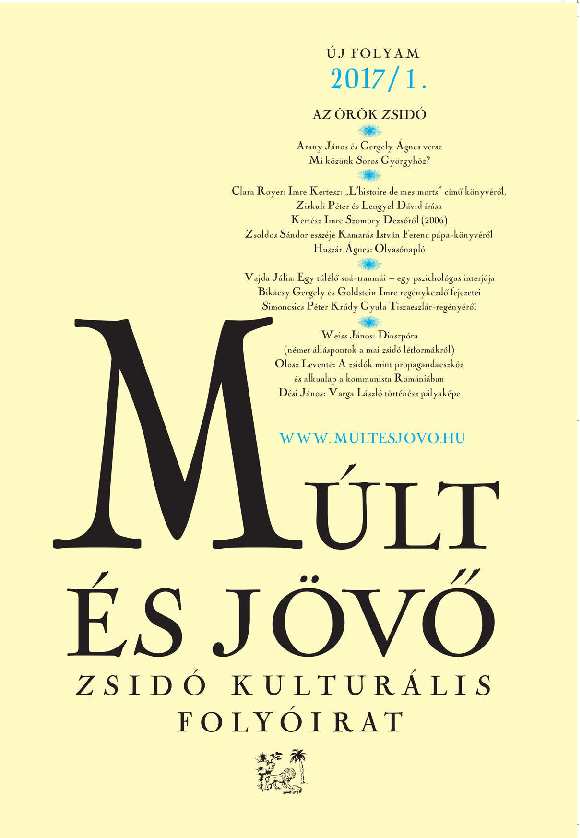
Francia könyv Kertész Imréről
Clara Royer: Imre Kertész: „L’histoire de mes morts.” Essai biographique. Actes Sud, 2017. 396 p.
More...We kindly inform you that, as long as the subject affiliation of our 300.000+ articles is in progress, you might get unsufficient or no results on your third level or second level search. In this case, please broaden your search criteria.

Clara Royer: Imre Kertész: „L’histoire de mes morts.” Essai biographique. Actes Sud, 2017. 396 p.
More...

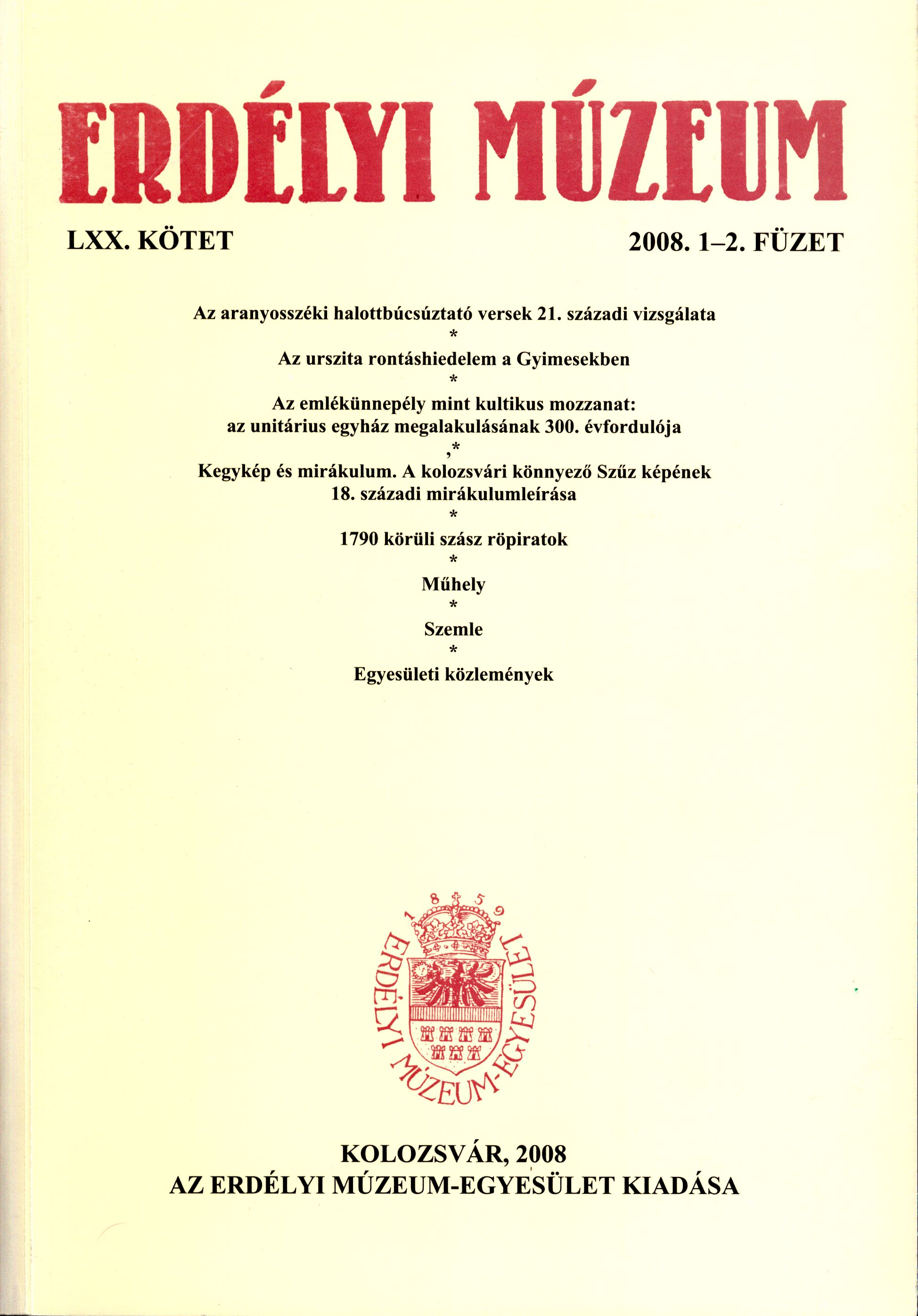
By reconsidering the difference between ethnographical description and literature, and here the author mostly refers to Clifford Geertz and Laplantine's works, the research of some literary texts as an ethnographical description would be possible. Taking into consideration these concepts the author has studied two of Márai Sándor's novels: The Confessions of a Bourgeois (Egy polgár vallomásai) and Kassa Patrol (Kassai őrjárat). The study contains the following points of views and themes: 1. the author has examined the bourgeois concept in Márai's two novels, comparing it with the definition of a bourgeois in social science; 2. the author has observed that the identity of the narrator in both novels, his special opinion about bourgeoisie and about art is in fact the author's artistic conception, and this answers to the literary critics' question why Márai remained at the tradition of classic modernism throughout his carrier: because of his attachment to the bourgeois value; 3. and thus the author tries to prove that a literary text can be the topic of an anthropological study because of the documentary value of the bourgeois description.
More...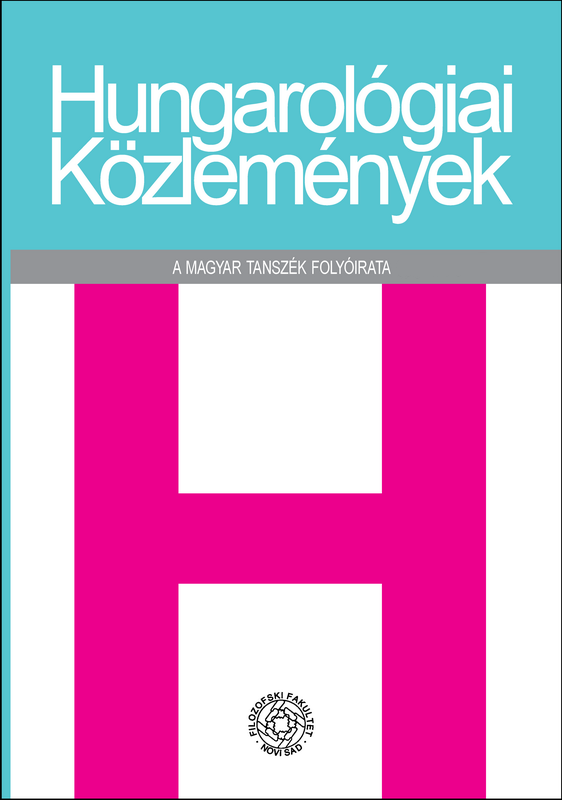
The question of alter egos and thus the localization of the narrators’ voices gives an exciting task to the readers of Ottó Tolnai. The paper focuses on Ottó Tolnai’s novel A tengeri kagyló, which, like others of his texts, carries the traits of fictive multiple authorship and emphasized live speech-likeness. While in some cases stamp collecting is a differentiation criteria, in this analysed novel the characters’ language use and vocabulary are of help in distinguishing them. The narrator identifies himself as a laic penner compared to the other characters and he constantly compares the phraseology of the others and his own, giving us almost more parallel texts. Narratological analysis focusing on the problem of the narrator thus necessarily operate with linguistic questions.
More...
The research deals with the question of narration appearing in lyrical speech in the poetry of Tolnai Ottó and Tomaž Šalamun. It raises the question of possible dominance of narrative vein in the works of the poets of late-modern Yugoslav art trends (conceptualism and neoavantgarde), and it describes the aspect of narrative nature. For this purpose the paper mainly focuses on the toolbar of thematic-motivic and structural solutions; the analysis of narrative deconstruction processes, fragmentation, pictorial narrative transformation mechanisms, subject creation come to the fore.
More...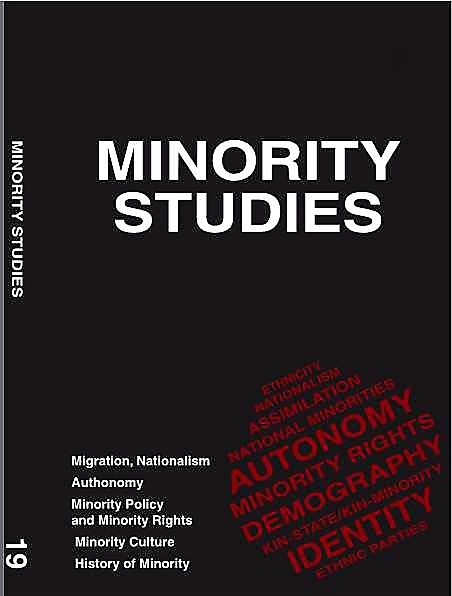
Not long ago, the literature-loving audience of Cluj-Napoca had the opportunity to attend an afternoon literary gathering, where chapters of The Transylvanian Trilogy, the main works of Miklós Bánffy, were read out from the already published German, and the upcoming Romanian translations. I believe this was a remarkable moment in the vicissitudes of the afterlife of the Bánffy literary heritage, as it indicated that, finally, after having been published in English, French, Spanish, Italian, German and Dutch, the Romanian edition of the Trilogy was becoming a reality. It might be of great interest then to take a look at the changing perception of the presence of the Bánffy body of works in Romanian literature. When and what was translated from his works and by whom? How were the works evaluated by the critics, publicists or literary historians?
More...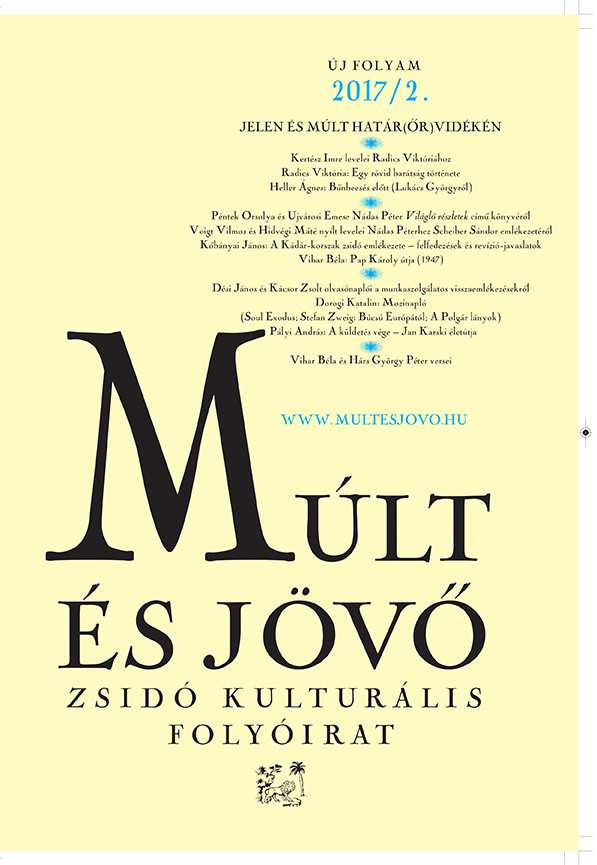


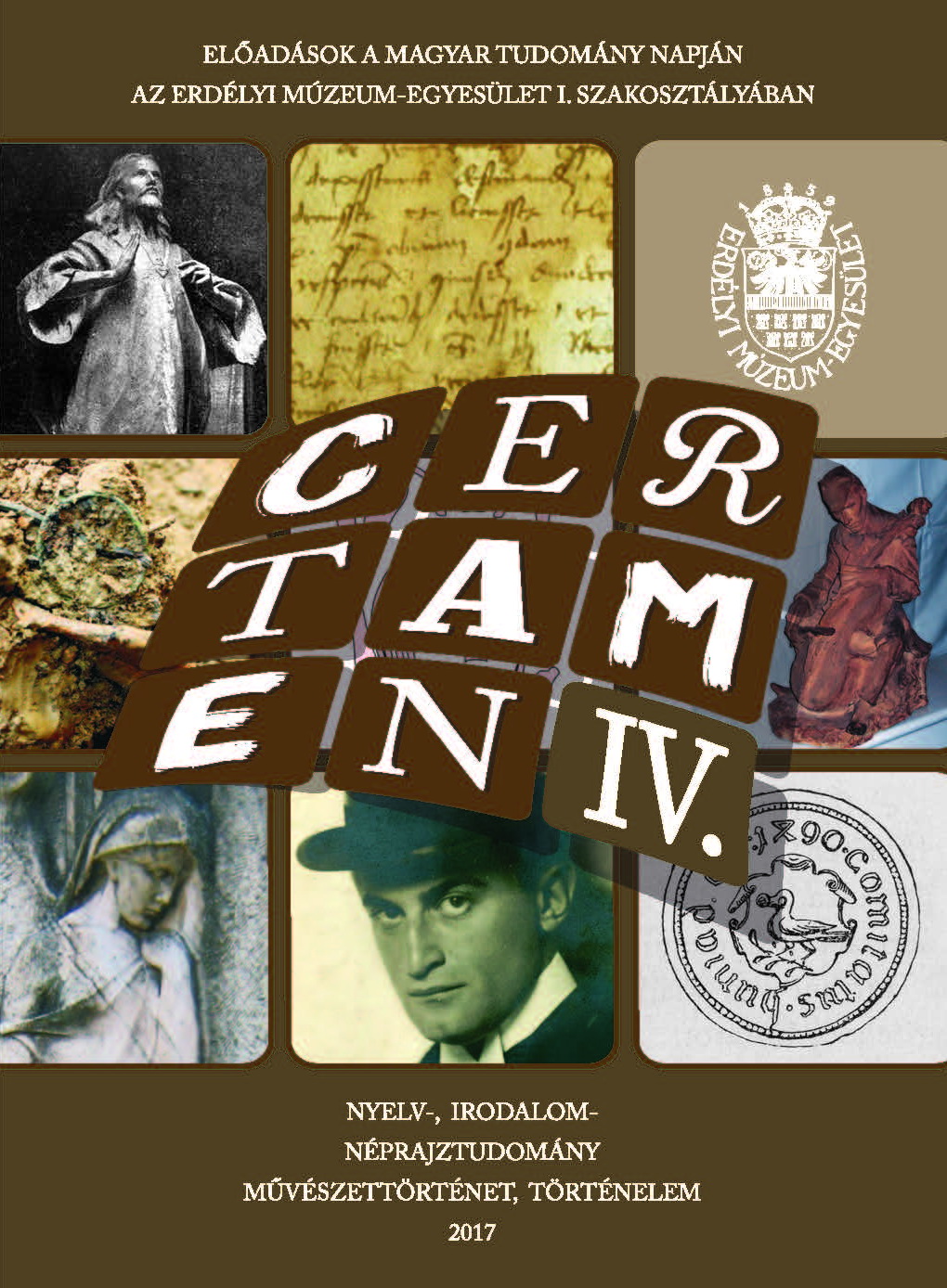
The paper focuses on the puritan priest, András Tarpai Szilágyi’s funeral oration: Jól meg halásnak mestersége, presented in 1659 at the funeral of Moktsai Balázs and printed (published) at Kassa in 1668. Until now, Tarpai’s work was unknown. The oration presents the condition of dying well – based on the puritan ethics and pietism.
More...
One of the most active figures of the Hungarian and Transylvanian Enlightenment literary movement was the judge from the Royal Table of Târgu-Mureș, György Aranka. A large part of his poetic work lies in manuscripts in the archives of Cluj-Napoca (Kolozsvár) and Budapest. The dissertation, on the basis of reception history, history of sources and archival research analyses the paratexts of György Aranka’s collection of poetry entitled The Flowers of the Hungarian Parnassus.
More...
Lajos Hatvany emigrates to Vienna in 1920, where he continues to be engaged in publishing and studies the questions of Hungarian literature, but feels an unappeasable desire to return to Hungary. Because he has an arrest warrant there, in order to live in dominantly Hungarian environment he chooses Transylvania, where he repeatedly travels to. This study investigates the types of activities he pursues in the emerging minority culture. By the current state of the processing of Hatvany’s legacy, the posed problem can be studied on three levels: 1. his Transylvanian relations, based on the correspondence published and on some of his letters remained in form of manuscripts; 2. his writings appeared in Transylvanian periodicals, the reception of his work in Transylvania; 3. nurturing of Ady’s memory and the Partium/Transylvanian threads of this.
More...
For Tibor Déry, Transylvania meant an important life experience although it never became central in his books published during his lifetime. His representations of Transylvania can be discussed based on short stories or shorter novels that appeared only in literary magazines or peripheral publications and collections, and also in his posthumous works. Déry cannot be considered a naive traveller in Transylvania, he was concerned with the multiple perspectives of the land’s inhabitants. In his works Transylvania appears as a multicultural space (inhabited by a Hungarian, Romanian, German, Jewish etc. population), but also as a place where class interaction takes place. The article focuses on the short novel A Kriska, discussing the specific perspective of the narrator, based on the tourist gaze theory.
More...
The present study is based on a bibliographic data collection, as a result of a postdoctoral grant. Taking into consideration the bibliography of Hungarian–Romanian literary contacts, and finding a monthly publication of the Európa Könyvkiadó in Budapest (Hungary), the study deals with the interpretation of lecturers on the Hungarian reception of Romanian literature. By categorizing these interpretations and opinions, the study builds a catalogue of aspects that helps at the microscopic observation of the literary export. The study analyzes the possible results of the bilateral joint editing between Romania and Hungary during this period, as well as the related problems, namely the non-equivalency between the author and his opera, respectively the translator and his literary translations. It also indicates that the role of the translator and translation – secondary in the process of literary creation – in the literary selection process and export receives overtones that deserve to be analyzed from the aspect of comparative and cultural contacts.
More...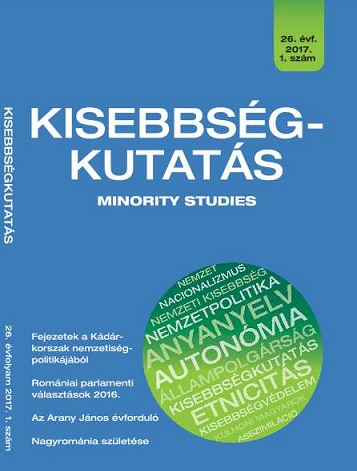
Erlinghagen (Regner), Erika: Die „jüngste Generation”. Deutschsprachige ungarndeutsche Literatur nach der Wende. = Spiegelungen. 10. Jg. 2015. No. 2. 73-82.
More...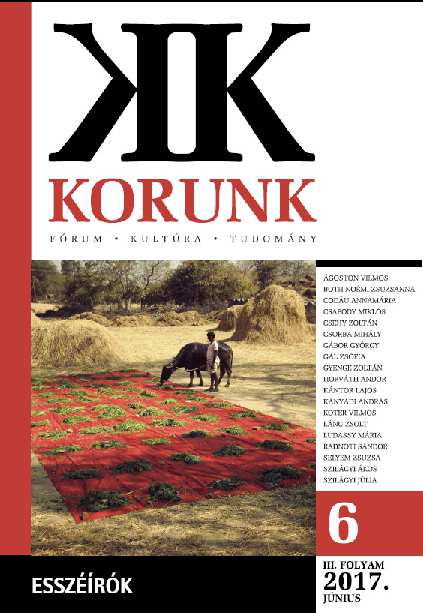
The essays analyzes what happened with the exemplary postmodernist Péter Esterházy’s humour and search for non-canonic holiness after 9/11 and after he published the non-novel of his father’s reports to the Secret Service written between 1957-1980, during the soft-dictatorial system in Hungary under Soviet occupation. Dog and God are not mirror images of each other in Hungarian; still they work as counterpoints of human fatalism. Face to face with catastrophes and moral decadence, the essay follows with much more enthusiasm than scepticism how Esterházy manages to seek the paths of love and responsibility.
More...

